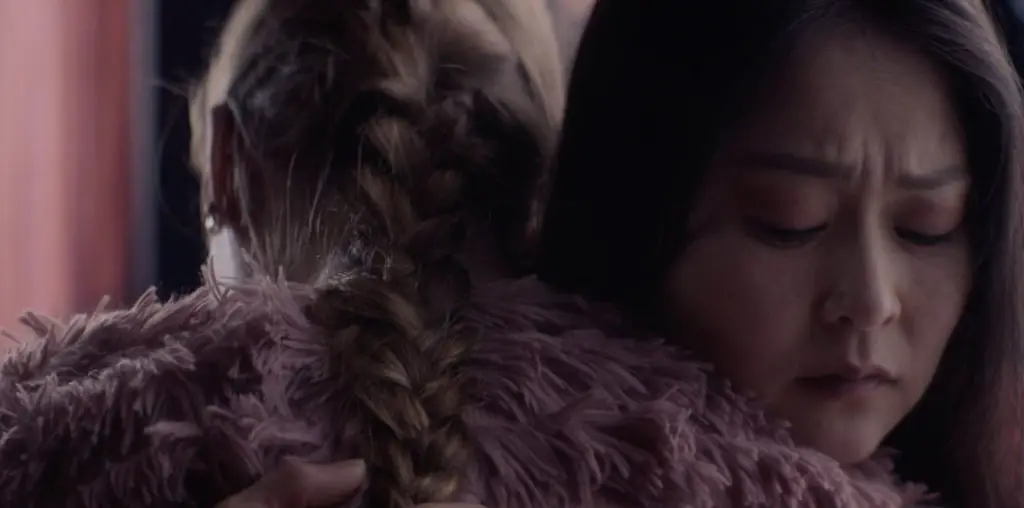Volume 3 of the “In/Flux” series on the lowave label continues their focus on experimental film by African artists. It contains some good films, and a couple of extraordinary ones. Because there is so little exposure in America and Europe to experimental work by African artists, these collections will prove valuable to Western viewers. The generally well-produced disc also includes bios and a short Artist Statement video from each artist, plus a detailed booklet. However, I found Stacy Lang’s critical essay in the booklet unhelpful, as she used the unfortunate device of comparing each film to the work of Ghanaian novelist Kojo Laing, without revealing much about either the films or Laing. The double-sided discs have a PAL system side and an NTSC side, but American viewers are advised that, like most lowave discs, the NTSC conversion is technically poor and contains noticeably jerky motion. You will do much better playing the PAL side of the discs, if you have a player with the capacity to do so. Here are some of the films I found interesting:
Algerian-born choreographer Heddy Maalem collaborated with Belgian filmmaker Benoît Dervaux on the mesmerizing “A Rose is a Rose is a Rose.” The film features Simone Gomis dancing to Fritz Hauser’s propulsive percussion score against a completely white backdrop. Unlike most formalist dance, Maalem’s choreography, inspired by forms of street dance, uses improvisation to reveal the passage of energy through the dancer’s body. Gomis dances with a singular attention and focus, as whirlwinds of circular energy pass through her at lightning speed. Dervaux includes many close-up shots of Gomis’ expressive face, which helps the viewer focus on her inner experience of the movement. The artist statement film also offers a fascinating look at Maalem’s rehearsal process, showing us how he takes the street dance skills of his dancers and applies them to a concert dance format.
Tunisian filmmaker Ala Eddine Slim’s “Journal d’un Homme Important,” originally a web series, shows its hapless protagonist, a Tunisian government official, kept naked with a black hood on his head in a cell and subjected to various uncomfortable tasks, like a prisoner being subjected to surreal tortures. Accompanying texts tell us random facts about his life. Of course, it is risky for any artist who lives in a repressive society to speak out at all, and these videos were made and webcast during the last days of ousted president Ben Ali’s regime. Slim has found a particularly poetic and condensed way to use simple images and text to address conditions in Tunisia during that time. In Slim’s artist statement, he warns that the problems of the police state in Tunisia did not end with Ali’s ouster.
South African performance poet Kgafela Oa Magogodi collaborated with filmmaker Jyoti Mistry to create the poetry film “Itchy City,” featuring Magogodi’s compelling performance of his poem celebrating the many desires which drive the inhabitants of Johannesburg. Mistry layers images of Magogodi’s performance over a collage of city scenes. Her fast-moving montage, beautiful use of color, and kinetic camera rhythms compliment the restless energy of the poetry.
For me, the most extraordinary film on the disc is “Chandelier,” a documentation of South African performance artist Steven Cohen’s performance at the site of a shanty town in Newtown, Johannesburg. The performance takes place while the site is in the process of being dismantled by city workers, who are evicting the homeless people who live there. Cohen, a white, gay man, is dressed in black spike heels and a skirt made from a crystal chandelier, plus little else, as he interacts wordlessly with the homeless residents who are losing the few scraps which are their only possessions. Cohen looks like an angel who has accidentally fallen from heaven, as he stumbles in his heels over the rubble, examining a world where powerless people are being victimized.
The video shows a full range of reactions to the performance among the residents. Some are delighted with the the unexpected beauty of Cohen’s performance, as it lightens up their dire situation, while others view him with anger or disdain. Of course, the racial subtext of the piece is enormous. The black majority government is directly responsible for the eviction, but whites still hold most of the economic power in post-apartheid South Africa. Cohen’s performance might be viewed as a delicate, brave, and sophisticated way for a white artist to respond to injustice against black Africans in contemporary South Africa.
While it is clear that the performance itself placed the emphasis on the plight of the community, the video documentation by Elu places Cohen in the center of almost every shot, which has the unfortunate effect of reinforcing the notion that the white person is still the most important one present. This effect of the style of the videography may not be ideal, but it doesn’t destroy the value of the piece as a documentation of an extraordinary example of performance activism.
Volume 3 of “In/Flux” contains much beautiful, fascinating work for anyone who wants to find out more about contemporary media art by African artists.


